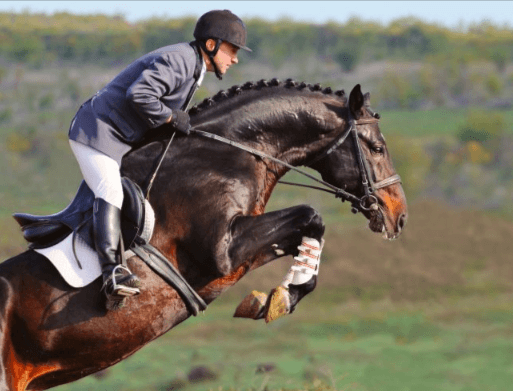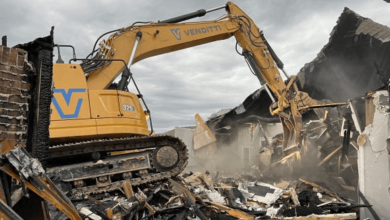How can riders improve their horse’s jumping technique and form?

Introduction
Jumping is one of the most exhilarating aspects of equestrian sports, requiring harmony between horse and rider. Perfecting jumping technique and form can significantly enhance performance, reduce the risk of injury, and increase confidence in both the horse and rider. This comprehensive guide will explore various methods to improve a horse’s jumping technique and form, offering practical tips and exercises to achieve excellence in the jumping arena.
Understanding the Basics of Jumping Technique
The Importance of Balance and Rhythm
Balance and rhythm form the foundation of successful jumping. A balanced horse moves more efficiently and can better adjust to the demands of each jump.
Rider’s Position and Influence
The rider’s position directly affects the horse’s jumping form. A secure, balanced seat helps the horse maintain rhythm and balance.
The Role of Approach and Takeoff
Approaching the jump with the correct speed and stride ensures the horse can take off correctly, which is crucial for clearing the jump safely and effectively.
Improving the Rider’s Technique
Developing a Balanced Seat
A balanced seat is essential for effective communication with the horse. Regular practice without stirrups can help develop this balance.
Enhancing Coordination and Timing
Exercises like grid work help improve a rider’s coordination and timing, which are crucial for synchronizing movements with the horse.
Using Proper Aids
Using legs, hands, and voice aids correctly can help guide the horse and improve its responsiveness during jumps.
Training Exercises for Better Jumping Form
Gymnastics Exercises
Gymnastics exercises, such as trot poles and bounce jumps, help improve the horse’s agility and coordination.
Grid Work
Grid work involves a series of jumps set at specific distances. It encourages the horse to maintain rhythm and improve its jumping technique.

Cavaletti Training
Cavaletti exercises, using low wooden jumps, help improve the horse’s balance and rhythm, which are essential for effective jumping.
Building Confidence in the Horse
Starting with Low Jumps
Starting with low jumps can build the horse’s confidence and help it understand the basics of jumping.
Consistent Practice
Regular practice helps reinforce good habits and improves the horse’s confidence over time.
Positive Reinforcement
Using treats and praise after successful jumps can motivate the horse and reinforce positive behavior.
Understanding Common Mistakes
Rushing the Training Process
Progressing too quickly can cause confusion and reduce the horse’s confidence. It’s essential to allow the horse to master each step before moving on.
Poor Rider Posture
A rider’s poor posture can unbalance the horse, making it harder for the horse to jump correctly.
Inconsistent Aids
Inconsistent use of aids can confuse the horse. It’s crucial to maintain clear and consistent communication.
Advanced Techniques for Experienced Riders
Using Jumping Combinations
Jumping combinations, such as double or triple jumps, challenge the horse and rider, improving their technique and coordination.
Incorporating Courses
Incorporating full courses into training sessions helps simulate competition scenarios, improving both horse and rider’s preparedness.
Analyzing Jumping Videos
Recording and analyzing videos of jumping sessions can help identify areas for improvement and track progress over time.
Equipment and Tack for Improved Jumping
Selecting the Right Saddle
A well-fitting saddle ensures the horse’s comfort and allows for better movement and jumping form.
Choosing Appropriate Bits
The right bit can enhance communication and control, which are vital for effective jumping.
Using Protective Gear
Protective gear, such as boots and bandages, helps prevent injuries during jumping sessions.
Working with a Professional Trainer
Benefits of Professional Guidance
A professional trainer can provide personalized feedback and structured training programs tailored to the horse and rider’s needs.
Regular Lessons
Regular lessons help maintain progress and address any issues that arise during training.
Attending Clinics
Attending jumping clinics offers exposure to different training methods and expert advice from top trainers.
The Importance of Physical Conditioning
Conditioning Exercises for Horses
Regular conditioning exercises improve the horse’s strength and endurance, which are crucial for jumping.
Stretching and Flexibility
Stretching exercises enhance the horse’s flexibility, helping it perform jumps more efficiently.
Proper Nutrition
A balanced diet ensures the horse has the energy and nutrients needed for rigorous jumping sessions.
Mental Preparation and Focus
Visualization Techniques
Visualization helps riders mentally prepare for jumps, improving focus and confidence.
Staying Calm Under Pressure
Techniques such as deep breathing and mindfulness can help riders stay calm and focused during competitions.
Building a Strong Bond
A strong bond between horse and rider enhances communication and trust, which are essential for successful jumping.
Incorporating Cross-Training
Dressage Training
Dressage improves the horse’s balance, flexibility, and responsiveness, all of which are beneficial for jumping.
Trail Riding
Trail riding exposes the horse to different environments and obstacles, improving its adaptability and confidence.
Groundwork Exercises
Groundwork exercises enhance the horse’s obedience and responsiveness, laying a solid foundation for jumping.
Ensuring Regular Veterinary Care
Routine Check-Ups
Regular veterinary check-ups ensure the horse is healthy and free from conditions that could affect its jumping ability.
Addressing Health Issues Promptly
Addressing health issues promptly prevents them from worsening and affecting the horse’s performance.
Dental Care
Regular dental care ensures the horse can comfortably accept the bit and respond to the rider’s aids.
Case Studies: Success Stories
Case Study 1: Overcoming Fear of Jumping
A case study highlighting how a specific training program helped a horse overcome its fear of jumping.
Case Study 2: Improving Jumping Form in a Competition Horse
A detailed look at how targeted exercises and professional guidance improved a competition horse’s jumping form.
Case Study 3: Building Confidence in a Young Horse
An exploration of techniques used to build confidence and improve jumping form in a young horse.
FAQs
How can I improve my horse’s takeoff for jumps? Focus on exercises that enhance the horse’s balance and strength, such as gymnastics and grid work. Ensure the approach is steady and the stride is consistent.
What are some common jumping mistakes made by riders? Common mistakes include rushing the training process, maintaining poor posture, and using inconsistent aids.
How often should I practice jumping with my horse? Regular practice is important, but it’s also crucial to balance jumping sessions with other types of training to prevent overexertion.
What kind of saddle is best for jumping? A saddle designed for jumping, which offers close contact and allows for free movement of the horse’s shoulders, is ideal.
How can I build my horse’s confidence in jumping? Start with low jumps, practice consistently, and use positive reinforcement to encourage and motivate your horse.
Why is professional training important for improving jumping technique? Professional trainers offer expert guidance, personalized feedback, and structured training programs that can significantly improve jumping technique and form.
Conclusion
Improving a horse’s jumping technique and form is a multifaceted process that involves the right balance of training, practice, and professional guidance. By focusing on the fundamentals, addressing common mistakes, and incorporating a variety of exercises and techniques, riders can significantly enhance their horse’s jumping performance. Remember, patience and consistency are key. With dedication and the right approach, both horse and rider can achieve remarkable improvements in their jumping abilities.






